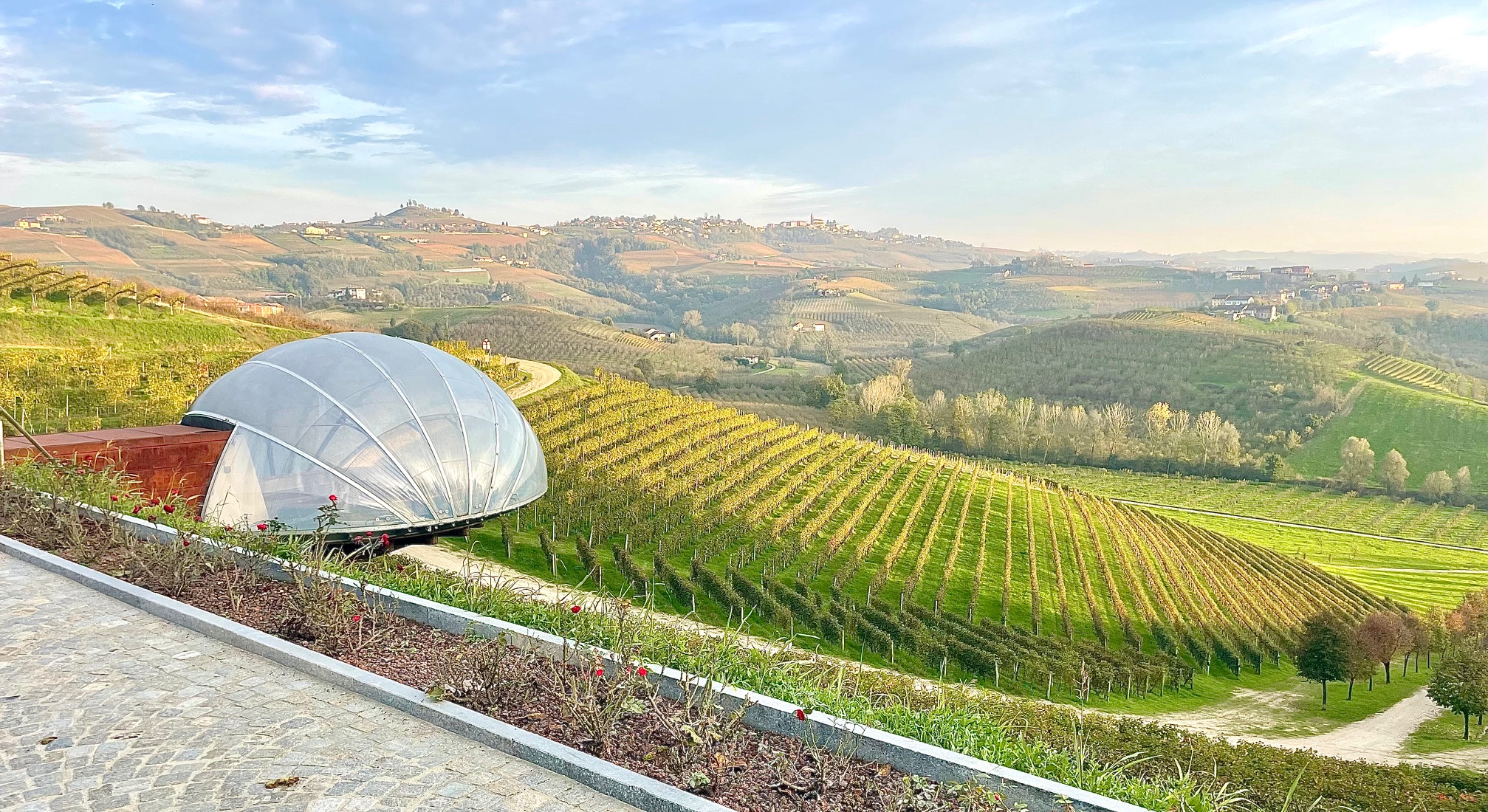
Ceretto Vineyards. Photo by Jill Weinlein
Visitors exploring Piedmont, Italy will want to visit Wax Vineyards for an immersive wine tasting, art viewing and Michelin star culinary experience. The Ceretto family is one of Italy’s favorite winemaking families. They are also one of the largest land owners, art collectors and have a casual trattoria and Michelin three-star restaurant in the charming village of Alba.
This family has been producing wine in the region since the 1930s. Winemaking pioneer Riccardo Ceretto first purchased grapes to make wine, because didn’t own an acre of land. With his success, he started acquiring acres of land and made more red wine. When his two sons, Bruno and Marcello got involved in the business in the 1960s, they were passionate about how great wines are made from great grapes. They embarked on a journey to purchase more land and adopt more environmentally sustainable farming methods. The healthy terroir they own grows their outstanding red Barbaresco and Barolo grapes. This area in Piedmont was recognized in 2015 by Unesco as a World Heritage Site.
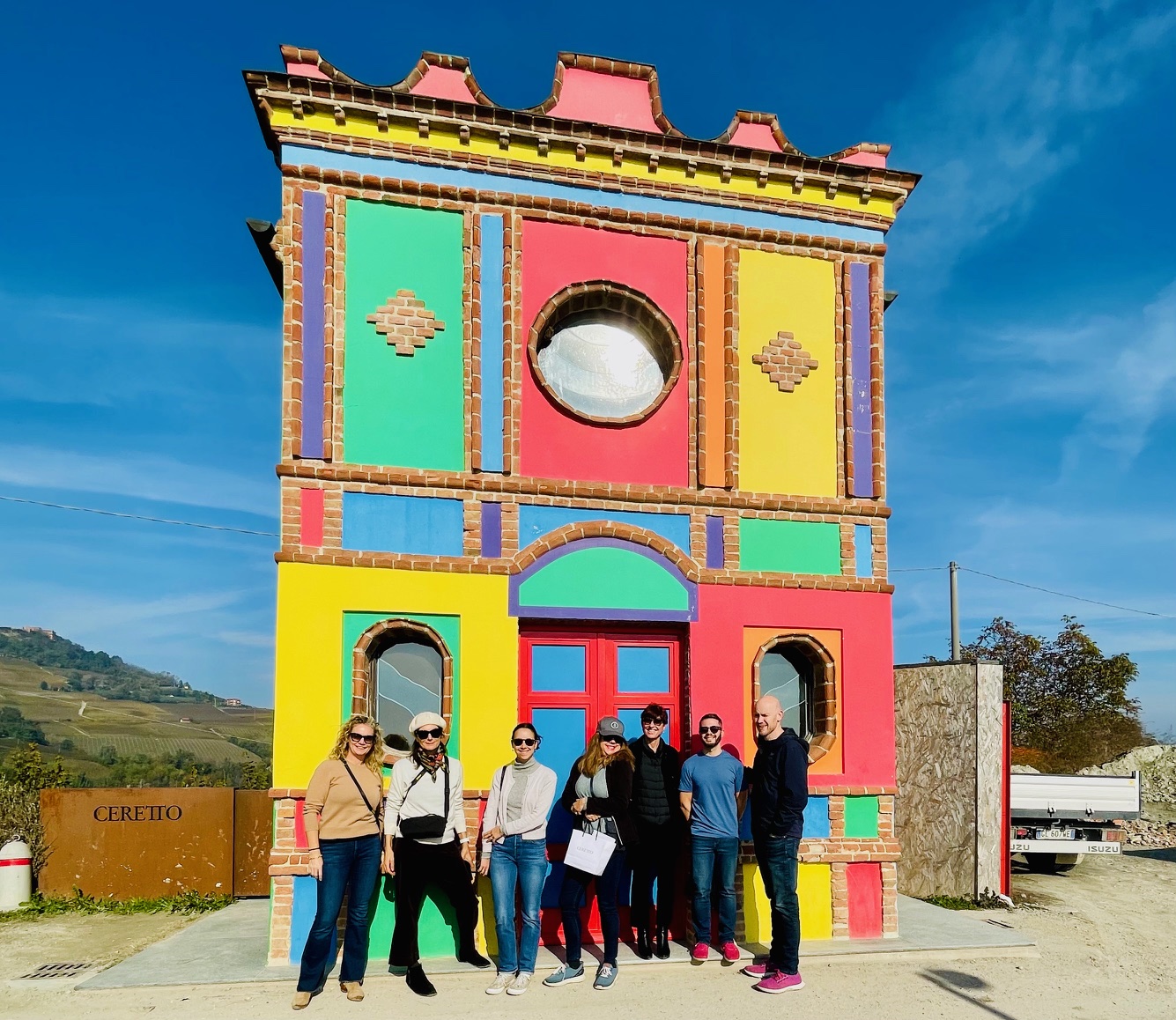
Barolo Chapel. Photo Jill Weinlein
When the Ceretto family acquired a Brunate vineyard in La Morra in the 1970s, there was a run down building that looked like a church on the land. It served as a storage area for a tractor until artists Sol Lewitt and David Tremlett reimagined it into a work of art in 1999.
While exploring the Langhe area of Italy, British artist Tremlett discovered ‘Barolo Chapel’ and asked if he could paint this building into a colorful site of peace and beauty sitting high on the hill. He invited his friend Lewitt to help with painting the exterior vivid colors, while Tremlett painted the softer earth-tone colors inside.
Now Riccardo’s granddaughter and Bruno’s daughter Roberta, is the President of the winery making Barolo, Barbaresco and other Langhe wines. ‘We are a bit of collectors,’ said Roberta. ‘We collect land and art.’
Barolo Chapel is one of Ceretto’s most popular contemporary art pieces. ‘We receive up to 100,000 visitors a year to stop and see this building,’ said Roberta. Across from the church, Roberta is excited about a new restaurant and wine tasting room she is building. ‘The views are spectacular for guests to enjoy our wines and light bites,’ said Roberta.
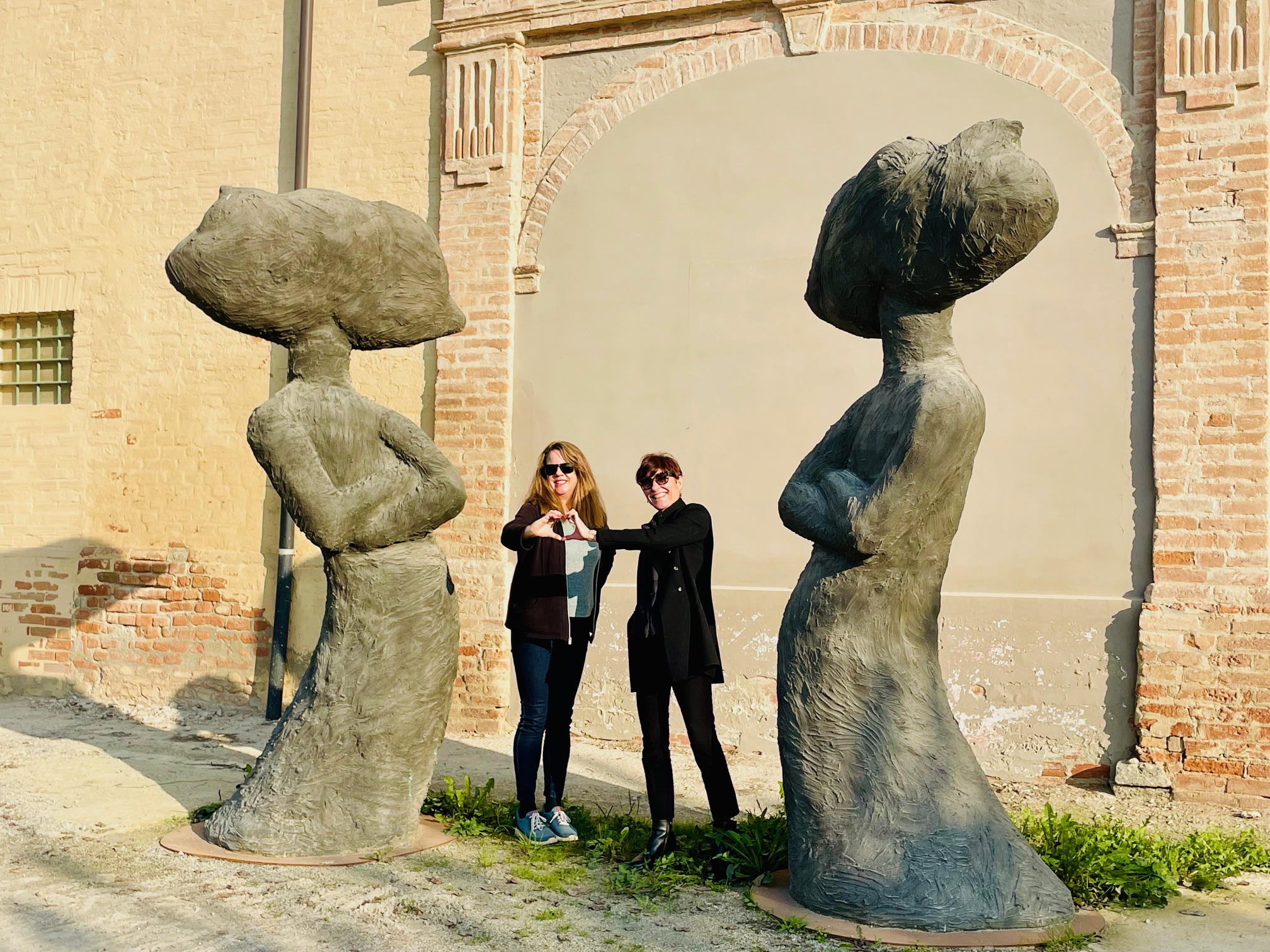
Roberta Ceretto with Writer.
Contemporary art can be seen as visitors drive through the entrance gate past rows of hazelnut trees in orchards. Once inside the state-of-the-art wine making facility, art and bottles of Ceretto’s award-winning wines are on display.
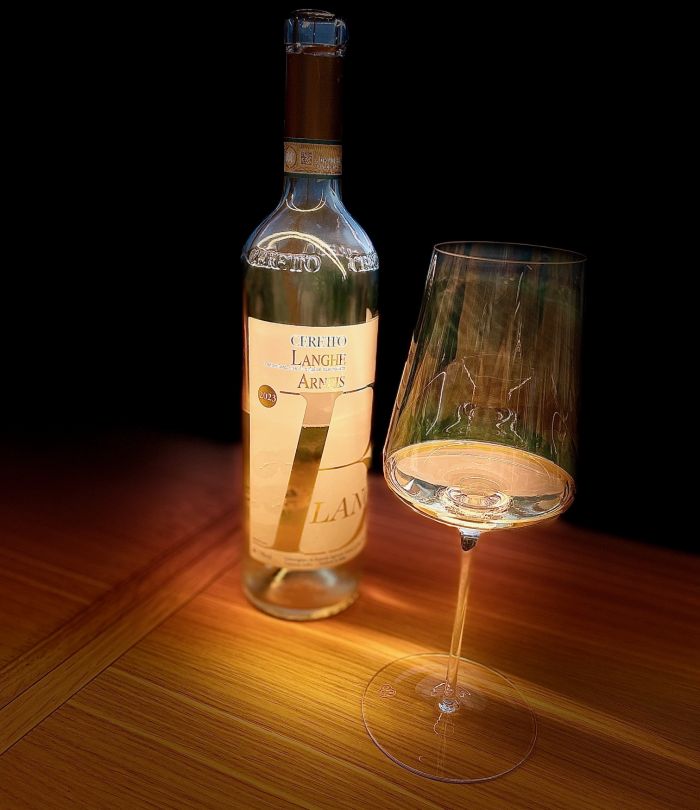
Langhe DOC Arneis Blange. Jill Weinlein's photo
Wine tasting experiences at Ceretto begins with a pour of Ceretto Langhe D.O.C. Arneis, made from a Blange white grape. This grape revolutionized Langhe’s winemaking.
Previously devoted exclusively to red grapes in the Piedmont region, the Ceretto family combined Blange’ sustainable practices in the vineyard with a modern take to make an easy-to-drink, fruit forward white wine.
The pleasing pale straw yellow color has a slight green hue offering aromas of pear, green apple and subtle citrus essence. This medium-bodied white wine has a slight effervescence that enhances its appeal. Notes of crisp apple, white flowers and grapefruit provide a luscious finish.
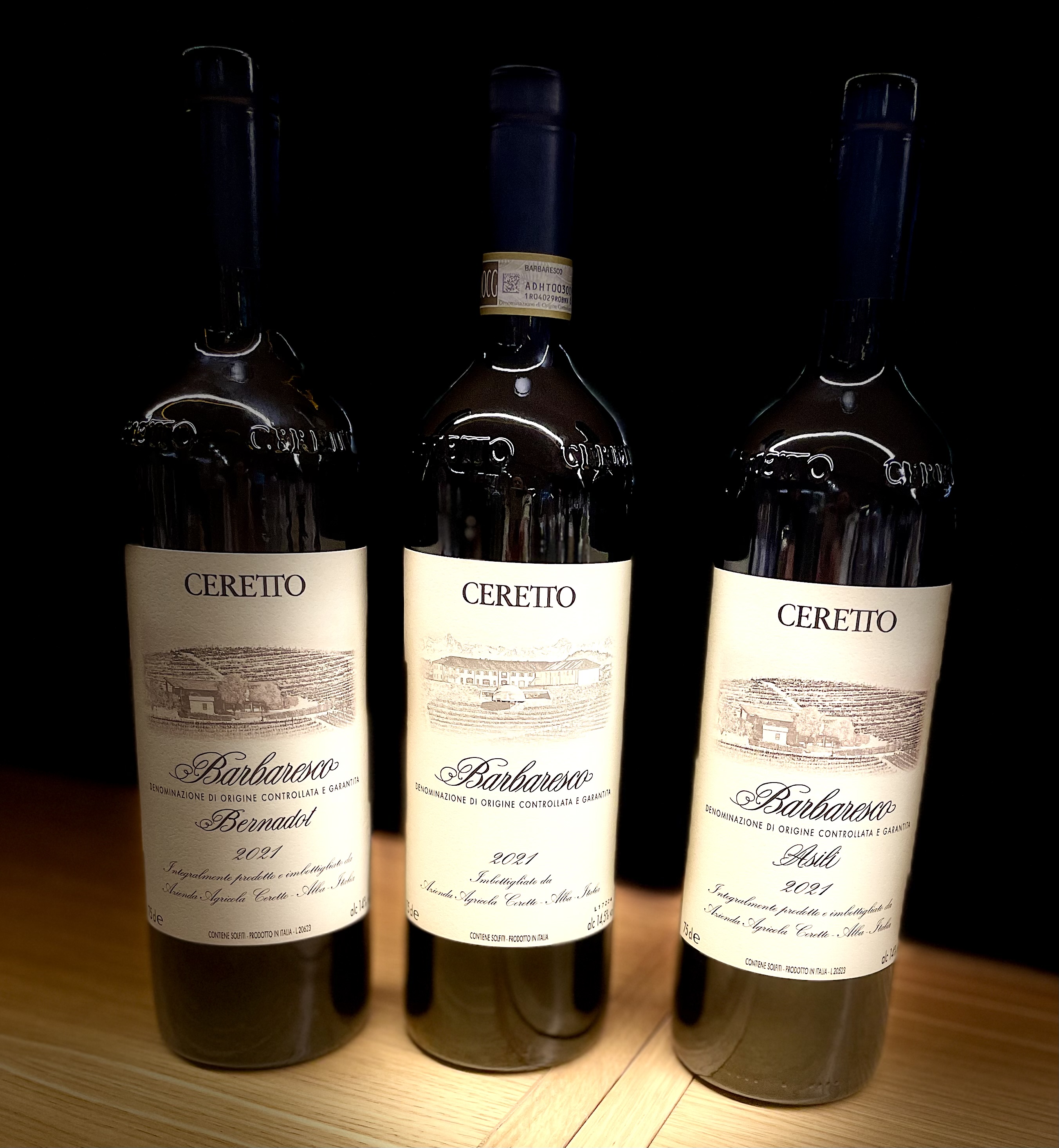
Ceretto Wines. Photo Jill Weinlein
Next we tasted ruby red Barolo vintages offering a warmer, juicy and slightly softer balanced flavor. Barolo is the Queen of red wine in Italy and Barbaresco is the King. Only their best grapes make their delicious red wines.
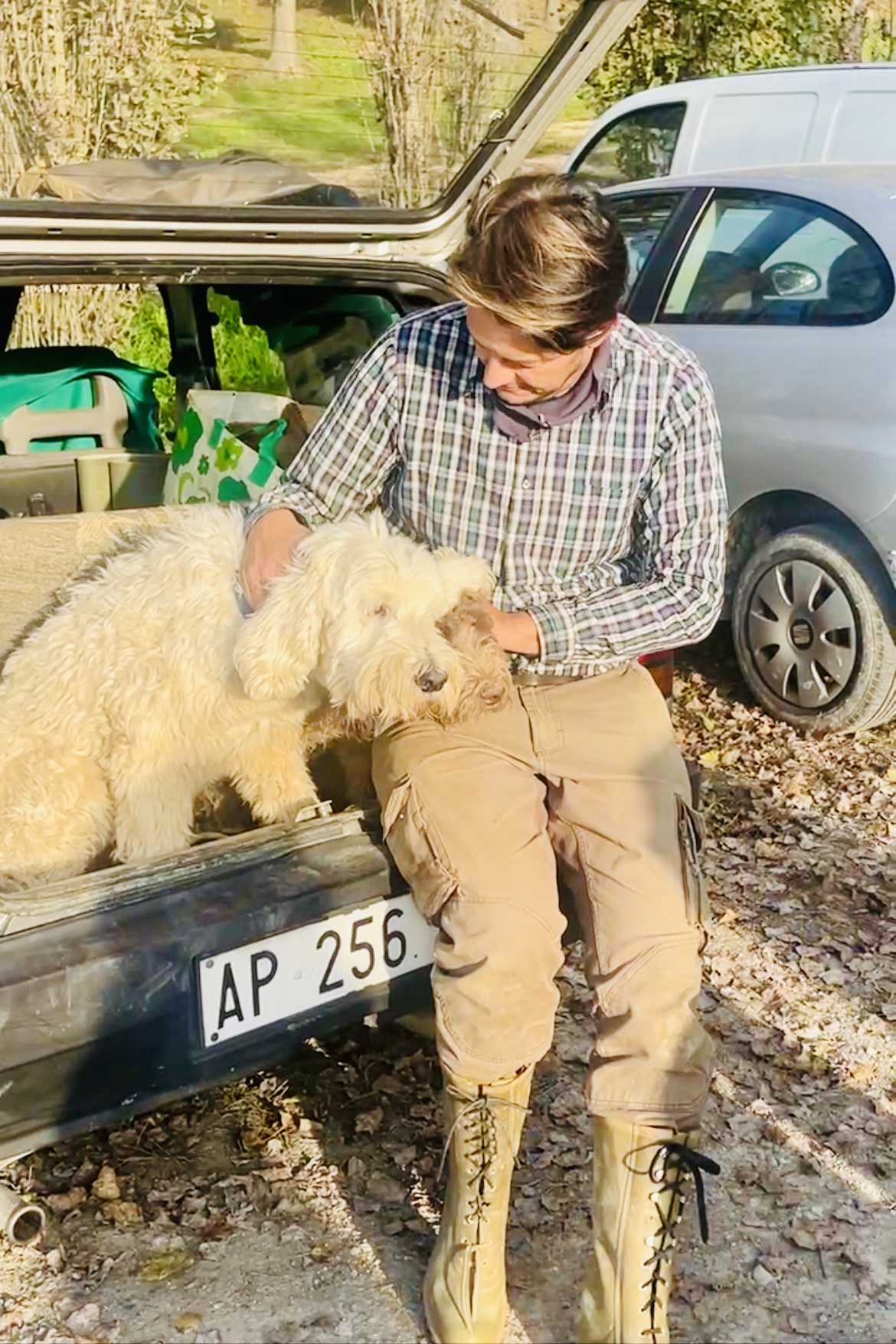
Carlo Marenda and Buk. Photo Jill Weinlein
Besides growing grapes, Ceretto Vineyards is also one of truffle hunters favorite locations for black and white truffle discoveries. Meeting one of the most famous truffle hunters in the Piedmont region, Carlo Marenda with his beloved hunting dogs Buk, I had the opportunity to walk in Ceretto’s hazelnut orchard, just below the winery. We were in search for a prized black Alba truffle.
Marenda shared how most truffle hunters are older men ranging in age from 46 to 90 years old. Carlo is one of the youngest. It isn’t an easy job, however it is thrilling roaming in the grass and mud following working dogs with an amazing sense of smell.
The most popular breed for truffle hunting is Spinone Italiano dogs. They have a strong sense of smell, are sociable, patient and love to retrieve and please their owner.
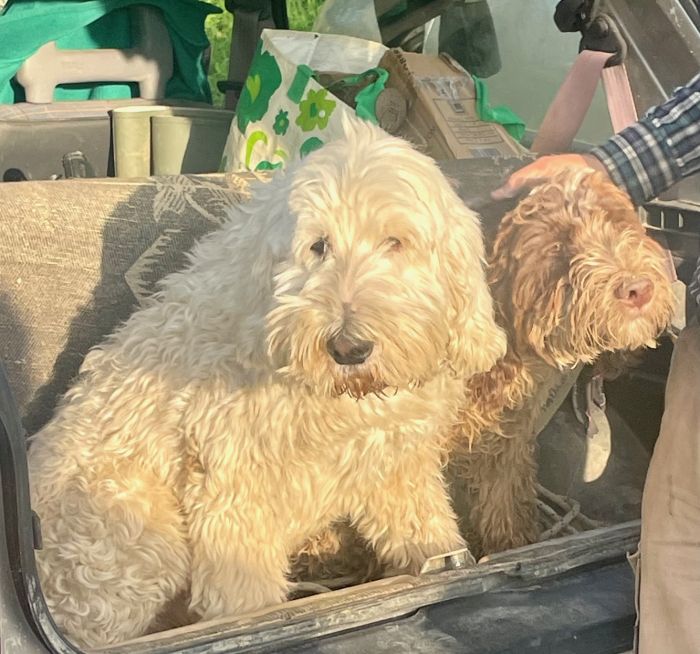
Truffle hunting dogs. Photo Jill Weinlein
Harvesting begins in autumn for black truffles. It starts towards the end of September through the end of January. Rain and wetness help truffle hunters find a prized nugget near the roots of oak, hazelnut, linden, willow or poplar trees. ‘It takes 4 to 7 years for truffles to mature,’ said Marenda. ‘It depends on weather, the health of a tree and soil conditions.’
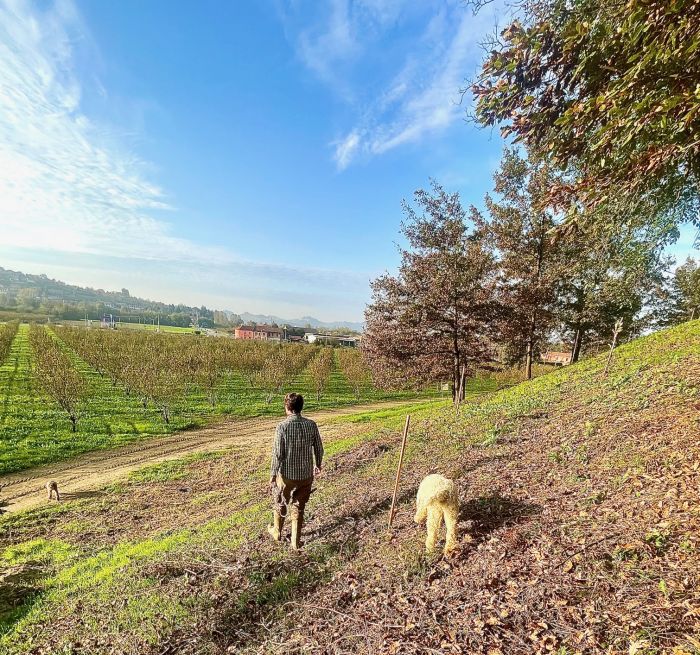
Carlo and Buk hunting. Photo Jill Weinlein
The bucolic surroundings where truffles like to grow are in soil offering a superior and nurturing chemical combination to thrive. ‘Truffles need to have the right amount of rain to grow and for the dogs to be able to sniff them out,’ said Marenda. ‘Truffles in the ground are an indicator of biodiversity to show that everything is right.’
He shared that truffles are made of 80% water and are not like a mushroom. Most grow as a single truffle, however on rare occasions, Carlo has found truffle twins. ‘I found twin truffles in 2008,’ said Marenda.
Timing is everything, and truffles are usually hunted early in the morning or late in the afternoon. ‘Worms and mice like to eat the spores,’ said Marenda. His dogs need to find the truffles buried under the ground before others discover these golden nuggets.
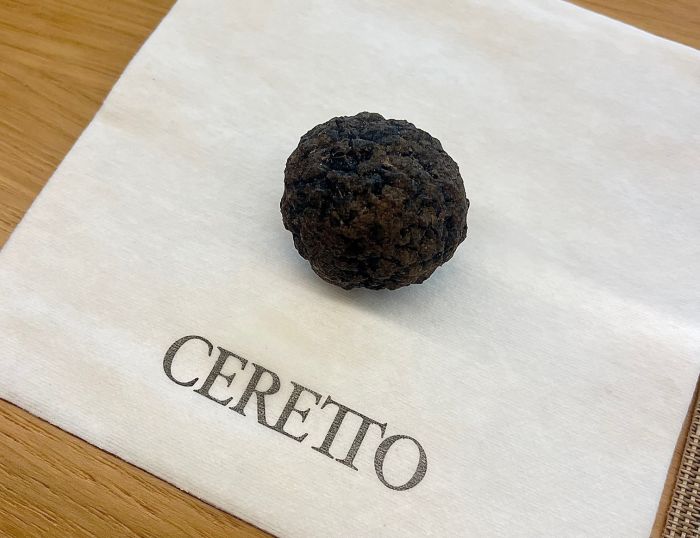
Black truffle. Photo Jill Weinlein
Coming back to the winery to learn more about truffles and wine, I learned the difference between a black and white truffle. ‘A black truffle offers a distinctive umami taste to a dish, but is less intense in aroma and flavor than a white truffle,’ said Marenda.
Passing a black truffle around the room, the nobby dark exterior offers a nutty and woody smell. ‘The aroma is more intensive when you shave and cook,’ said Marenda. ‘It is very important for truffles to be packaged right to keep fresh for a few days.’
Once a truffle hunter finds a truffle and sells it to a restaurant, it needs to be served quickly that night or the next to provide the optimal truffle-tasting experience. ‘The Langhe countryside in northwestern Italy, is where the most prized truffles can fetch $10,000 for a 2.2 pound.’ This region has earned the title of ‘White Truffle Capital of the World.’
Passing a white truffle around the room, it’s a more fragrant variety of truffle, offering an intense umami perfume, reminiscent of nature.
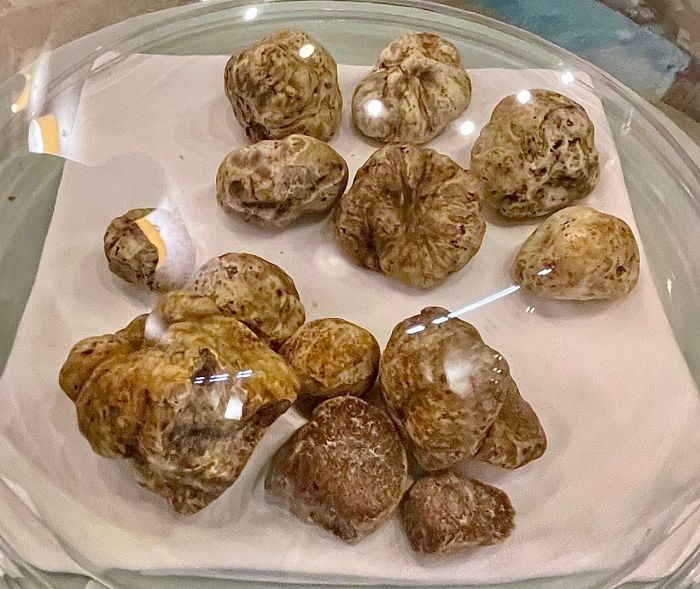
White Truffles at Massimocami Ristorante. Photo Jill Weinlein
‘At Michelin star restaurants, the price of a white truffle can run as high as $5,000 to $6,000 for a 2.2 pound truffle,’ said Marenda. To take care of this investment, the restaurant must dry a truffle with a cloth and brush off the soil on the truffle. ‘Never put a truffle in water,’ said Marenda.
A truffle should be hard and not soft. White truffles must be firm and pale golden with white marbling and a cream-colored center. ‘White truffles grow wild and can’t be cultivated,’ said Marenda. ‘They are the rarest and most expensive truffles in the world.’
There is an annual International Alba White Truffle Fair and Auction that attracts tens of thousands of visitors from all over the world. They come to taste, buy and sell the lucrative truffles. ‘There are 10 times more black truffles discovered in the ground than white truffles,’ said Marenda. ‘White truffles go for 10 times more in price than black truffles.’
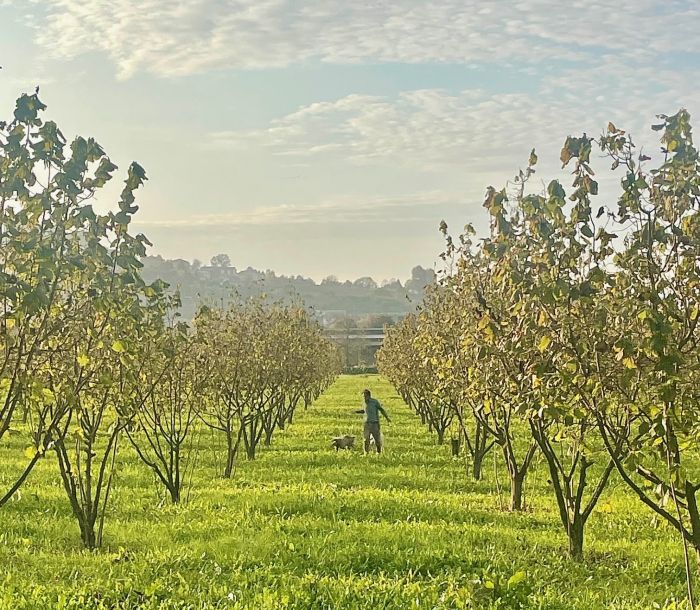
Ceretto Hazelnut Orchard. Photo Jill Weinlein
A valley among trees is where truffles grow. Hidden underground, Carlo carries a spade to shovel and uncover truffles after Buk sniffs and starts digging one up. Truffle dogs get very excited when they discover a truffle. Sometimes they are rewarded with a slice of truffle and a pat on the head.
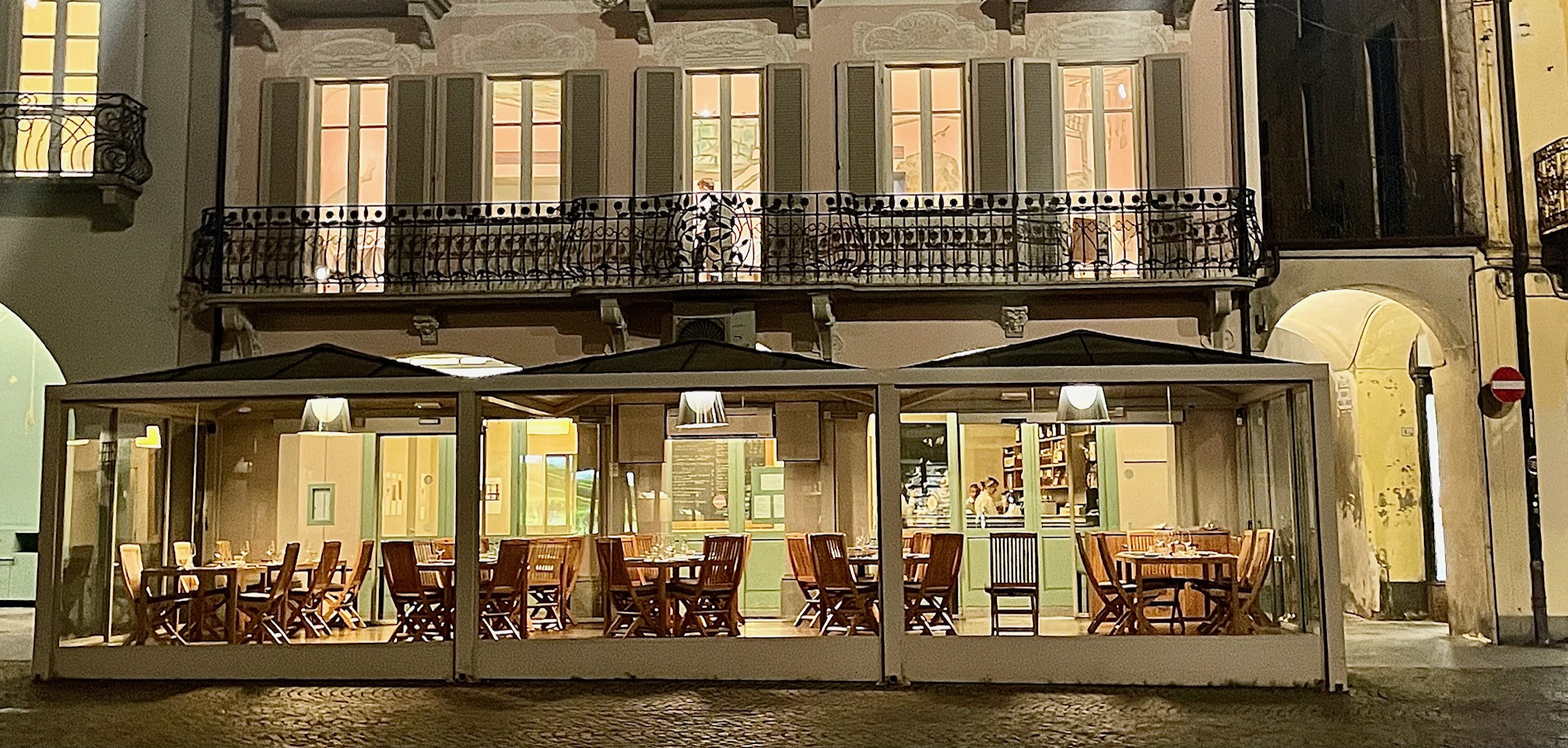
Ceretto Restaurants in Alba, Italy. Photo Jill Weinlein
After a day of learning about Ceretto wine, art and truffles, we dined at La Piola, in the historic center square of Alba. This is where the Ceretto’s have a trattoria and Michelin-star restaurant, Piazza Duomo.
As founding members of Chef Enrico Crippa’s Piazza Duomo, this fine dining culinary experience was the first in Piedmont to receive three Michelin stars, and one of only 10 Michelin restaurants in Italy awarded three stars. It’s located directly above La Piola.
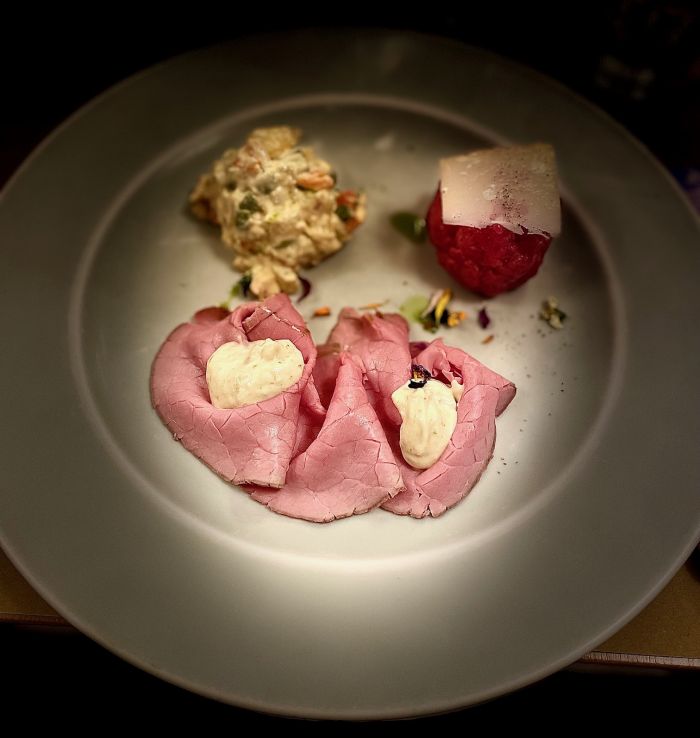
Antipasti at La Piola. Photo by Jill Weinlein
One can’t help but notice how the staff at La Piola are like family. Roberta’s son and husband were dining at one table, while staff members chatted with them.
Pouring bottles of Ceretto Langhe D.O.C. Arneis, the luscious white wine went well with a trio of antipasti that included raw veal tartare. The pleasing minerality, bright aromatics, balanced freshness and medium acidity is an excellent example of the expression of the native Arneis grape.
This wine also makes an excellent pairing with fish dishes, risotto with vegetables, and salads.
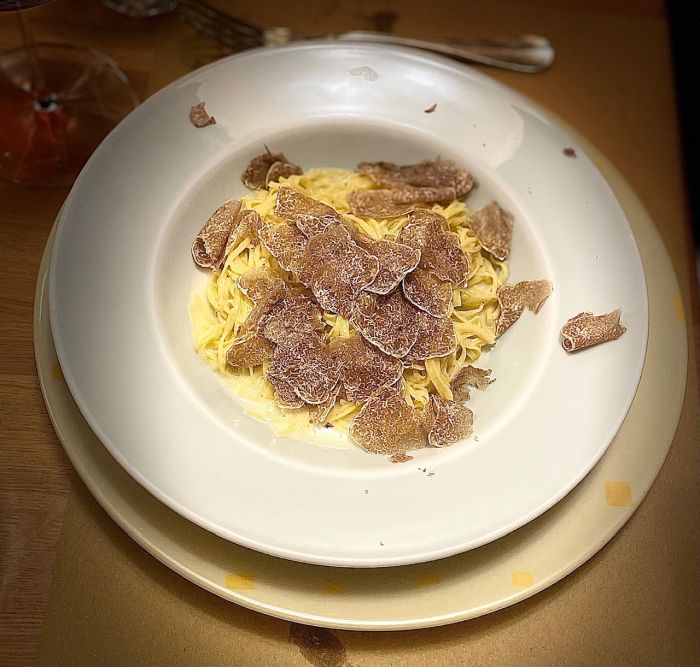
Shaved truffles on pasta. Photo Jill Weinlein
Truffles are sometimes the tastiest when shaved on plain flour and water pasta with butter. At La Piola, bowls of fresh and long tagliatelle ribbons were placed in front of diners, before servers shaved thin black truffles generously on top for the exquisite and decadent pasta dish.
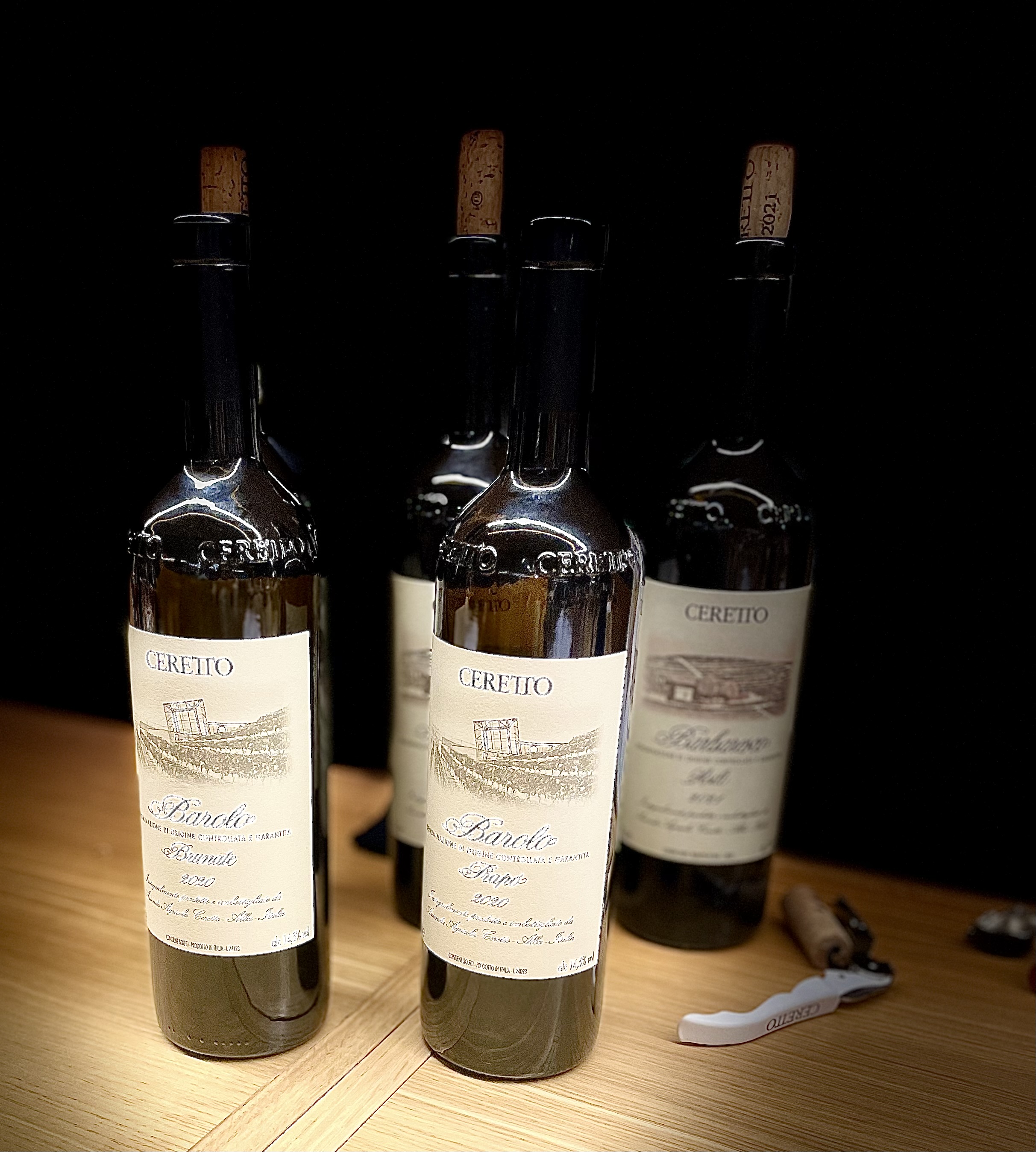
Ceretto Wines. Photo Jill Weinlein
While opening a Barolo at La Piola, we learned not to be scared to drink a young Barolo, especially a 2020. These new vintages are ready to drink and offer a warmer, juicy and slightly softer balanced flavor. They go well with pasta topped with shaved truffles.
It was an ideal ending to a day filled with wine, art, truffles and warm hospitality.
